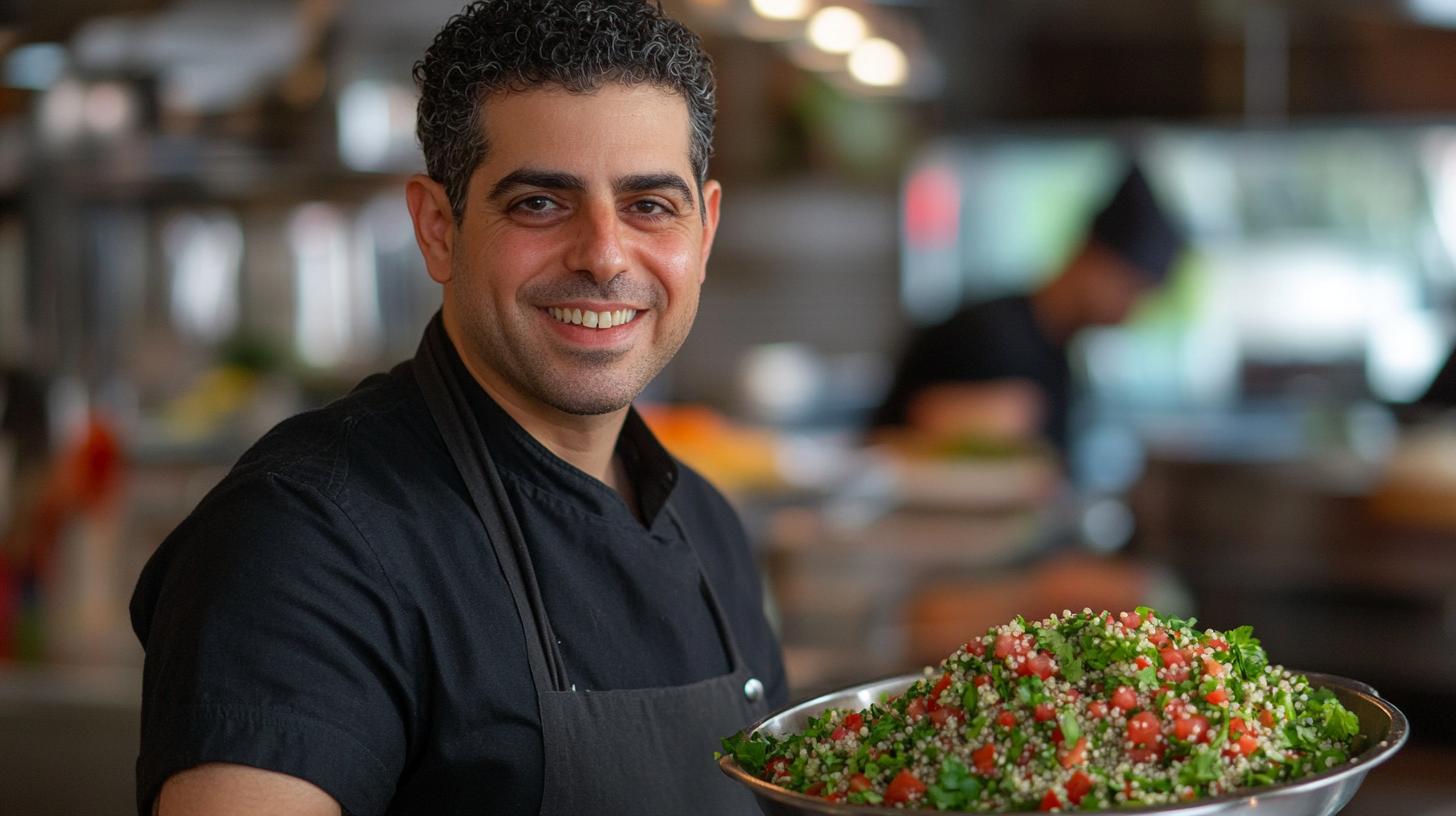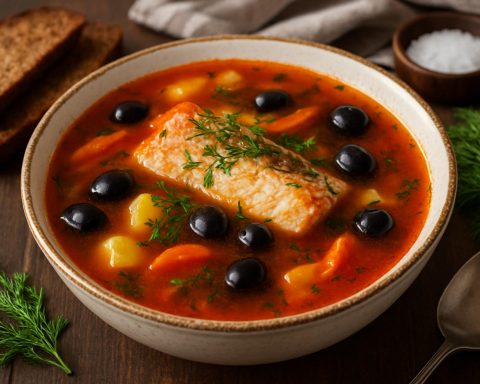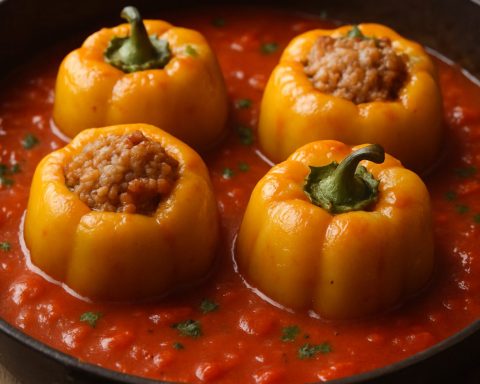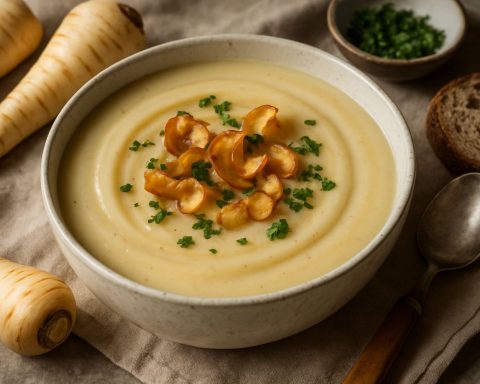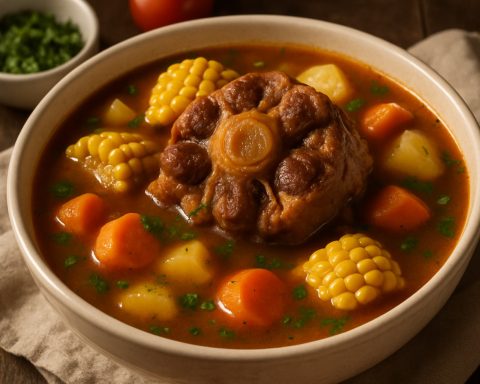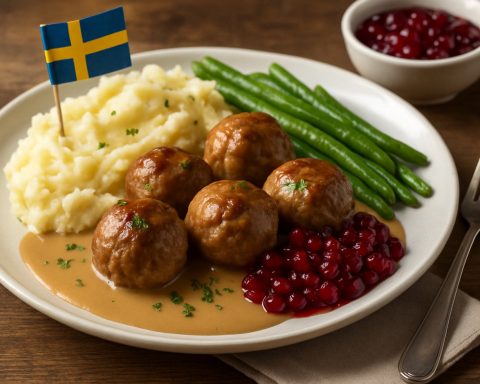Introduction: Classic tabbouleh, a staple of Middle Eastern cuisine, primarily features bulgur wheat, but a revolutionary twist is challenging this tradition: the use of quinoa. With the increasing popularity of plant-based diets and gluten-free eating, quinoa tabbouleh is making waves and could be the future of healthy eating.
Ingredients: The modern twist on tabbouleh involves swapping the traditional bulgur wheat with quinoa, adding a nutty flavor and fluffy texture. You’ll need 1 cup of quinoa, 2 cups of water, a bunch of fresh parsley, mint leaves, a pint of cherry tomatoes, a cucumber, an onion (preferably red), lemon juice, olive oil, and salt and pepper to taste.
Preparation: Cook the quinoa by rinsing it thoroughly, then simmering in water until tender and the liquid is absorbed. Cool it down. Finely chop parsley and mint, dice the tomatoes, cucumber, and onion. Combine these with the cooled quinoa. Whisk together olive oil, lemon juice, salt, and pepper, and dress the salad.
Technological Buzz: The quinoa tabbouleh revolution is fueled by advancements in agricultural technology. With techniques like hydroponics and vertical farming, quinoa production is becoming more sustainable and accessible worldwide. This development not only enhances food security but also caters to the growing demand for superfoods.
Conclusion: As culinary trends shift towards healthier options, quinoa tabbouleh exemplifies how tradition can be preserved while embracing new, sustainable practices. With quinoa’s adaptability and nutritional profile, this dish represents a delicious glimpse into the future of global cuisine.
Quinoa Tabbouleh: A Modern Spin on a Classic for Nutritional Excellence
In the realm of Middle Eastern cuisine, tabbouleh is a cherished cornerstone. Typically crafted with bulgur wheat, this dish has been reimagined to align with contemporary dietary preferences through the introduction of quinoa, offering a plant-based, gluten-free approach to this classic favorite. As we venture into an era that values health-conscious eating, quinoa tabbouleh is gaining momentum as the epitome of nutritious and sustainable dining.
The Nutritional Powerhouse: Quinoa
At the heart of this innovative dish is quinoa, a superfood known for its exceptional nutritional profile. As a complete protein, quinoa contains all nine essential amino acids, making it an excellent choice for vegetarians and vegans seeking to meet their protein needs. Rich in fiber, quinoa aids in digestion and helps maintain a healthy gut. Its low glycemic index makes it a smart choice for maintaining stable blood sugar levels, while its substantial content of vitamins (such as B-vitamins) and minerals (including magnesium, potassium, and iron) supports overall wellbeing.
Herbal Freshness: Parsley and Mint
Fresh parsley and mint are not just vibrant additions to quinoa tabbouleh but are also healthful in myriad ways. Parsley is packed with vitamins A, C, and K, which are crucial for immune function, skin health, and bone strength. It also acts as an antioxidant powerhouse, neutralizing harmful free radicals in the body. Mint, meanwhile, offers its own health benefits, including aiding in digestion and providing a soothing effect on the stomach. The aromatic herbs also add a refreshing flavor that invigorates the senses.
Colorful Veggies: Tomatoes, Cucumbers, and Onions
Cherry tomatoes, cucumbers, and red onions contribute both taste and nutrition. Tomatoes are loaded with lycopene, a powerful antioxidant linked to reducing the risk of heart disease and certain cancers. Cucumbers hydrate and provide essential nutrients like vitamin K and a host of antioxidants. Red onions not only bring a crunchy texture and zesty flavor but also offer health benefits due to their rich content of quercetin, an anti-inflammatory flavonoid.
Olive Oil and Lemon Juice: Simple Yet Powerful
The dressing—a blend of olive oil and lemon juice—is simple yet potent. Olive oil is renowned for its healthy monounsaturated fats, which support heart health by lowering bad cholesterol levels. It also contains anti-inflammatory and antioxidant properties that contribute to overall cardiovascular and metabolic health. Lemon juice, rich in vitamin C, enhances immunity, aids in digestion, and adds a burst of bright, tangy flavor that complements the dish.
A Sustainable Future
Emerging techniques in agricultural technology, such as hydroponics and vertical farming, are revolutionizing quinoa production, making it more accessible and environmentally friendly. This sustainable approach to farming aligns with global efforts to secure food resources while minimizing ecological impact, ensuring that the quinoa tabbouleh we enjoy today remains a viable option for future generations.
Conclusion
Quinoa tabbouleh is more than a modern twist on an age-old recipe; it is a testament to the ability of cuisine to evolve with our understanding of nutrition and sustainability. By embracing ingredients like quinoa and fresh herbs, this dish not only captures the essence of traditional tabbouleh but also leads the way in promoting a healthier, more inclusive approach to eating. As the demand for nutritious and environmentally conscious foods grows, quinoa tabbouleh stands as a flavorful icon of transformation in global gastronomy.
The Quinoa Tabbouleh Revolution: Beyond Traditions
The rise of quinoa tabbouleh is not merely a culinary fad but a significant shift in global food practices, reflecting broader trends in health and sustainability. As quinoa becomes more prominent in cuisines worldwide, its impact is bolstered by innovative agricultural techniques and changing consumer habits. This article delves into the evolving landscape of quinoa tabbouleh and the multifaceted elements driving its popularity.
Innovative Agricultural Practices Boosting Quinoa Supply
Quinoa, once limited by regional production in South America, has seen a surge in global cultivation, primarily due to technological advances in agriculture. Methods like hydroponics and vertical farming not only make quinoa cultivation more feasible in diverse climates but also significantly reduce the environmental footprint of traditional farming. These techniques ensure year-round production, offering consistent quality and availability that align with the increasing demand for this superfood. For more insights into sustainable agriculture, visit UN’s official website.
Quinoa Tabbouleh: A Nutrient-Rich Alternative
Quinoa’s rise in culinary circles is largely due to its impressive nutritional profile, offering a complete source of protein that’s rare among plant-based foods. It provides essential amino acids, fiber, and minerals such as magnesium and iron, catering to those on gluten-free and plant-based diets. The substitution of bulgur wheat with quinoa not only delivers these nutrients but also introduces a unique texture and flavor that enhances traditional tabbouleh.
Health Trends Driving Quinoa Tabbouleh’s Popularity
The increasing shift towards plant-based diets is a major trend propelling quinoa tabbouleh’s growth. As consumers become more health-conscious, they seek foods that align with dietary preferences while not compromising taste. Quinoa-based dishes meet these criteria, providing a versatile base for various global flavors while ensuring nutritional adequacy.
Potential Drawbacks and Considerations
Despite its benefits, quinoa cultivation raises concerns, primarily surrounding ethical sourcing and the impact on indigenous communities traditionally reliant on quinoa farming. The global demand may lead to price fluctuations affecting local access. It’s crucial for consumers to seek ethically sourced quinoa to mitigate adverse effects. Regulatory practices and consumer awareness can play pivotal roles in addressing these issues.
Market Analysis and Predictions
The quinoa market is expected to grow exponentially, driven by demand for superfoods and innovative food products. As more consumers embrace wellness lifestyles, quinoa tabbouleh and similar dishes could become staples in restaurants and home kitchens globally. Businesses in the food sector have vast potential to innovate and capitalize on this trend, integrating quinoa into diverse culinary applications. For market insights, explore the resources available on the FAO’s website.
In Conclusion
The quinoa tabbouleh phenomenon highlights the potential of blending tradition with innovation, creating dishes that not only honor culinary history but also embrace modern health trends. With ongoing advancements in agriculture and increasing consumer demand, quinoa’s role in the future of global cuisine appears promising and vibrant. As this trend continues, it presents an opportunity for individuals to enjoy delicious, sustainable, and health-enhancing meals.
